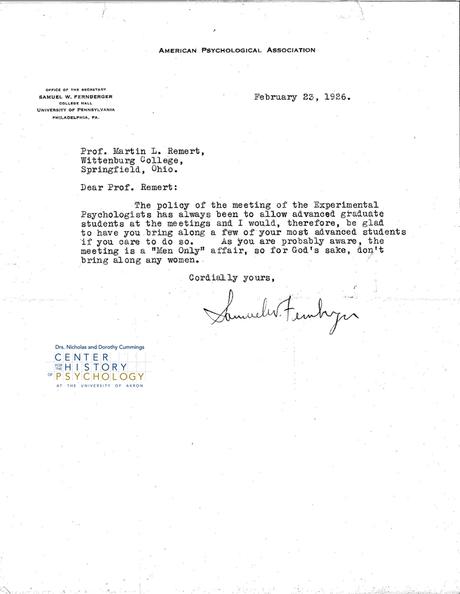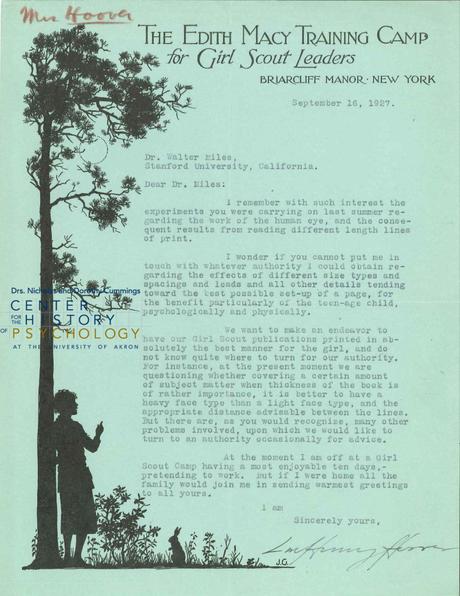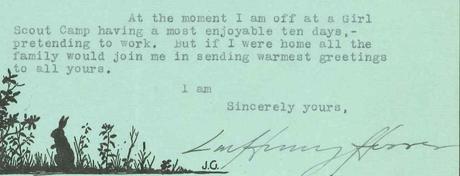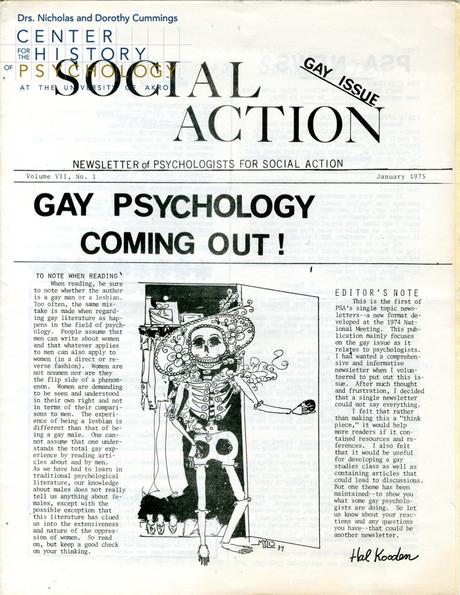contributed by Lizette Royer Barton
Welcome back for the fourth installment of CCHP Pandemic Projects.
First of all, let me be the first to say that there is no substitute for working with physical archival materials in the Charles L. and Marjorie S. Brewer reading room. But since we can’t do that right now we are trying our best to provide some meaningful archival projects suitable for remote learning.
I think one misconception about teaching with archival materials is that you have to have all the pieces of the puzzle and you have to tell a complete story. In all reality, for instructors and students just getting started with primary sources, that can be a bit overwhelming.
Let me share a CCHP pro tip – one of the best ways to get started with primary sources is with a single letter or one page document. For real!
You’ll find everything for this project here: A Single Letter or Document Analysis.
Check out this one. It’s one of my favorites. I use it for onsite “introduction to archives” sessions all the time.
 Martin Reymert papers, box M2896, folder 5
Martin Reymert papers, box M2896, folder 5As you are probably aware, the meeting is a “Men Only’ affair, so for God’s sake, don’t bring along any women.
If you are into the history of psychology you likely know all about the Society of Experimental Psychologists (aka The Experimentalists) and their exclusionary history. They were the very definition of “an old boys’ club.” This letter is pretty excellent evidence for that so it’s perfect for helping to tell that story.
But you don’t have to be teaching a history of psychology course to use this letter in your coursework. You can use this letter to help tell the story of women in science in 1920s. You can use it for a lesson on presentism and have students consider how folks likely interpreted this letter in 1926 versus how it would be interpreted today. You can have your students use this letter as a jumping off point for a bit of research about the roles of women in America in general during this time period.
I have a general document analysis sheet available in our CCHP Pandemic Projects folder but remember, you can adapt it however you see fit. And don’t forget, the National Archives has some fantastic resources online for getting started with document analysis. See here: NARA Educator Resources.
How about another letter? This is another one of my favorites.
 Walter & Catharine Cox Miles papers, box M1199.5, folder LHH-GS
Walter & Catharine Cox Miles papers, box M1199.5, folder LHH-GSIt’s easy to determine who received the letter (Dr. Walter Miles at Stanford University) but who sent it? If nothing else, this is a great lesson on the time it can take to decipher handwriting in the archives.
So, who wrote the letter? Can you tell? You can find the answer here.

Now that you know it’s First Lady Lou Henry Hoover you can use the letter in a variety of ways. Use it as evidence of her involvement with the Girl Scouts of America. Use the letter to help teach about the history of Girl Scouts or for biographical research on Lou Henry Hoover. Maybe dig deeper and try to determine whether or not there is some kind of connection between Walter R. Miles and Lou Henry Hoover. Hint – there is a connection.
And finally, how about we move away from correspondence? Check out the cover page of the “Gay Issue” of the Psychologists for Social Action‘s Social Action (1975) newsletter.
 CCHP Special Interest collection, folder “Psychologists for Social Action”
CCHP Special Interest collection, folder “Psychologists for Social Action”The front page of this newsletter has two pieces, a note to readers and also a note from the editor. Both are powerful statements and can really help facilitate some critical thinking about who is doing the research. Remember, homosexuality wasn’t removed from the Diagnostic and Statistical Manual (DSM) until 1973. In the DSM-I (1952) being gay was a sociopathic personality disturbance and in the DSM-II (1968) being gay was considered a sexual deviation.
Were LGBTQ+ psychologists and psychiatrists doing the research and creating those labels or were heterosexual psychologists and psychiatrists creating those labels? Did LGBTQ+ folks consider themselves mentally ill prior to 1973? Who determines what ends up in the DSM anyways? Talk about that with your students!
People assume that men can write about women and whatever applies to men can also apply to women (in a direct or reverse fashion)….As we have had to learn in traditional psychological literature, our knowledge about males does not really tell us anything about females, except with the possible exception that this literature has clued us into the extensiveness and nature of the suppression of women. So read on, but keep a good check on your thinking.
So read on, but keep a good check on your thinking. I love that. How can you facilitate a discussion with your students to help them keep that in mind as they conduct literature reviews and as they work to consider sources as evidence throughout not only your class but throughout their lifetime?
And who were the Psychologists for Social Action? Are they still around? Did they morph into another group? What else were they doing in the 1970s?
I assume, like me, you think the first page of the newsletter isn’t nearly enough. I know! I know! This is supposed to be an analysis of a single page but I’m a “see more” kind of gal so I just can’t help myself. Access the entire 1973 newsletter here.
Go ahead and get started teaching with archives. Start small, work your way up, and get your students engaged with primary sources. Even a single letter can spark interest and provide an opportunity for critical thinking.
A note to instructors and students: we would love to hear back from you if you have used any of these projects in class. Your feedback helps us as we continue to develop archival projects that can be completed remotely.
To access more CCHP remote learning materials click here: CCHP Pandemic Projects and for specific questions please email me directly – [email protected].
